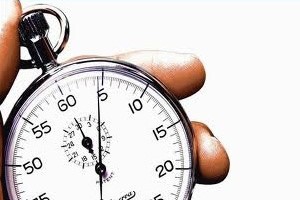BPA trading room Q&A: June 1, 2015
I analyzed my trades and found out most of my profits were from trades that took less than 10 minutes to complete. So I’m wondering if a time stop could help me. Do you think time stops are useful in positions — in addition to price actions stops?
Audio duration: 1min 35sec
Audio transcript
Time stops — different approaches

In a way, you hear me talk about time stops, but I don’t use the phrase “time stop.” I’ll say something like, “Okay, I just took a trade. I am disappointed by the entry bar. I’m disappointed by the follow through. And now, two to three follow through bars later, I’m still disappointed. This trade is not working out the way I thought it was going to work out, therefore, I’m going to get out breakeven. Maybe I can make a tick or two, maybe I’ll lose a tick or two.”
So in that sense, I use time stops. If I take a trade expecting something and something else happens — for example, the market enters a tight trading range, and I was not expecting that, I thought that was a lower probability outcome — I just get out. So effectively, that is a time stop.
But that’s the only way I use time stops. I know some traders use a fixed time limit. Like, they’ll say, “Okay, I’m going to put a bracket order. I’ll buy here and I’ll place an order to sell 4 points higher, and a stop order 4 points lower But I’ll also get out in 30 minutes if neither of my orders are filled.” And the math is probably okay, but to me, I don’t like being too rigid, and I prefer to use stops based upon movement.
So I guess you could argue it’s the lack of movement, and that therefore, it’s a type of movement that I personally never get out on a fixed hard time stop — like I’m going to get out 30 minutes after I get in — whether or not I have a profit. If the premise is still valid, a lot of times I’ll hold. If the premise is no longer valid, especially if it’s entering a tight trading range, I’ll just get out.
Al Brooks
Information on Al’s Online day trading room


Admin, I realise this has nothing to do with time stops but I want to ask a question which could potentially be the subject of a future Ask Al so I thought this might be a good place to do so…
Al, When placing orders, do you use a DOM or price ladder? I have been looking into learning to read order flow, specifically with regards to spotting whether or not BOs are likely to succeed or to fail. Perhaps if one became proficient at reading order flow the DOM and/or time and sales could prove valuable clues as the price ticked above the entry bar? Ever tried this? I know you use a very minimal setup lol but we have never seen how you actually place orders so I feel the question is valid.
Hi Angus,
Allow me to answer for busy Al as i do know his answers to questions on DOM. I have talked with Al on topic several times.
Yes, Al does use the DOM price ladder to place orders, as well as to manage orders as so easy to move orders around. In addition, when the market is moving fast, he will place Market Orders as needed using the MO button.
However, Al does not use the DOM for order flow, and only watches the Time and Sales to get a feel for the momentum in market. The standard DOM does not show all the orders that go through and the market depth given is not at all useful as dozens, hundreds, even thousands of orders can go through a level before it moves up/down, and the figure on the market depth does not reflect this at all.
I myself do use order flow (10-20%) as well as price action (80-90%) but extra tools and level II/market depth data is needed. By all means drop me an email if you want more info on this.
Richard